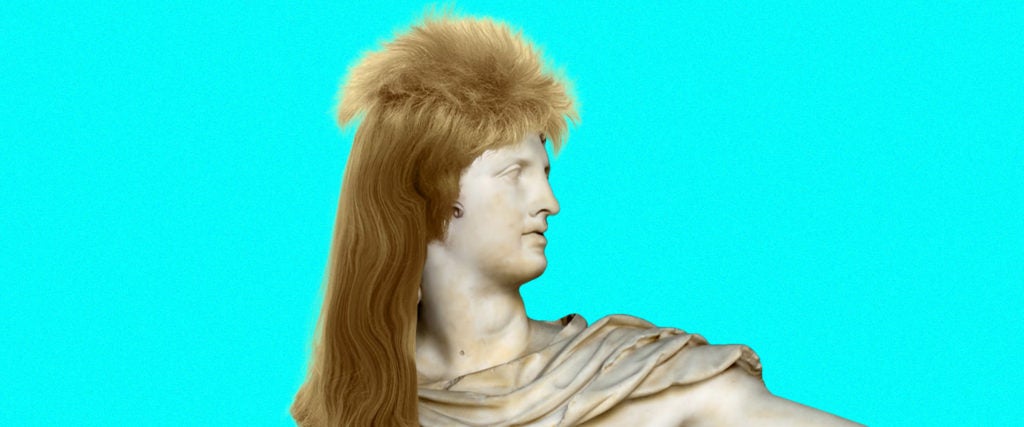In 2018, archaeologists in England discovered a 5-centimeter-high copper alloy figurine during excavation work at a parking lot on the Wimpole Estate in Cambridgeshire. The figurine, which was at first thought to be a rendition of an early Celtic deity, was later identified as a rare glimpse into what ancient Brits during the 1st century A.D. might have looked like. And as it turns out, the guys probably cut their hair like Brooklyn hipsters.
Shannon Hogan, an English archaeologist, told The Guardian last month that the figure’s mullet-like haircut was initially thought to have been a limitation of the manufacturing process, but upon closer inspection, “it could very well be reflecting sort of the face of your average man.”
But even if the mullet was a deliberate visualization of the average ancient Briton, it’s far from the first mullet sighting in the annals of human history. The oft-derided haircut is actually a product of the earliest civilizations. Indeed, literature’s first mullet mention may have come from the ancient Greek poet Homer — in The Iliad, he described the Abantes, a group of spearmen, as wearing “their forelocks cropped, hair grown long at the backs,” per History.com.
According to Alan Henderson’s 2007 book, Mullet Madness!: The Haircut That’s Business Up Front and a Party in the Back, ancient civilizations in Syria and Mesopotamia were amongst the earliest adopters of the hairstyle as a way “to keep their necks warm in chilly weather and their eyes free from the obstruction of a fringe,” reports i-D. (Although the Ancient Greeks and Mesopotamians were both around during the Bronze Age, the Mesopotamians had a significant head start on the Greeks.)
In the West, Greek statues dating back to the 6th century B.C. indicate that the mullet was likely a staple of their early civilization, which isn’t surprising, when you consider that the natural outgrowth of any person’s hair is likely to result in a mullet-like haircut. In Ancient Rome, meanwhile, the mullet — referred to as the “Hun cut” — was “sported by young wealthy bands of hooligans, many of whom, not unlike today’s soccer fans, supported differing factions in one of the popular sports of the day: chariot races.”
It would take another couple thousand years before the mullet would be anointed with its current moniker, though. First known as the “Kentucky Waterfall” here in the States, the term “mullet” wasn’t coined until the Beastie Boys’ song “Mullet Head” was released in 1994.
In 2014, the New York Times pondered whether “mullets are so bad they’re good?” In the article, writer Marisa Meltzer credits stylist Guido Palau as being the reason for the mullet’s post-early-aughts revival. Today, as is the case every five or so years, the mullet is on yet another comeback tour. Just last year in his article about the queer rebirth of the mullet, my colleague Joseph Longo wrote that the hairstyle “is less about pickup-truck masculinity,” but rather, “an intentional statement of gender fluidity.”
All of which is to say that despite its trashy reputation, the mullet isn’t just a classic — it’s as much a part of the story of humankind as opposable thumbs.

